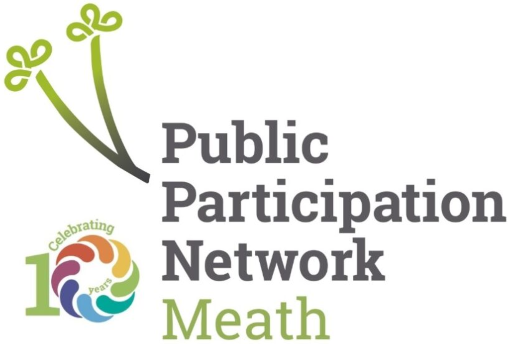The All-Ireland Pollinator Plan: Newsletter -March 2024
Comments : 0
 The All-Ireland Pollinator Plan is a framework bringing together different sectors across the island of Ireland to create a landscape where pollinators can survive and thrive. Its implementation is coordinated by the National Biodiversity Data Centre. |
To spot this month: keep an eye out for the Hairy-footed Flower Bee The Hairy-footed Flower Bee (Anthophora plumipes) was first recorded from Ireland in March 2022 in Dublin City. It is a large solitary bee, but can look like a bumblebee. The males and females can be different to each other. The female can resemble a small black bumblebee with distinctive orange hairs on the hind leg. In Britain, it shows a preference for Lungwort. Males have light brown/ginger hairs all over their body and cream markings on their face. They also have distinctive long orange hairs on their middle legs and feet, which is where the species gets its name. Their quick darting flight motion is a good way to tell them apart from bumblebees. Keep an eye out, and send a photo if you think you find any new populations this spring! Photos: Martin Fitzpatrick.  Submit your solitary bee sightings Information on the species in Britain To do this month: consider taking part in the Bumblebee Monitoring Scheme Within the National Biodiversity Data Centre, we have been tracking bumblebees since 2012, through a citizen science scheme called the Bumblebee Monitoring Scheme. Volunteers within this scheme walk a fixed ~1km route once a month from March to October and count the number of different bumblebees they spot. Beginners are very welcome, but it does require a time commitment in learning how to identify the different bumblebee species. The scheme has been slowly building through our amazing volunteers, but we still need to add another 20 walks over the coming years. March is the best time for beginners to join, as in early spring there will be fewer different species for you to learn to identify. If interested in becoming a volunteer, you can take our free course in identifying bumblebees which also explains how the scheme works: https://biodiversityireland.ie/identifying-irish-bumblebees/lesson.html On an island scale, the scheme helps us understand if bumblebees are increasing or declining. At site levels, it’s a great way to assess the impact of actions you are taking in support of the Pollinator Plan. If you decide you’d like to give it a try, please email me directly (ufitzpatrick@biodiversityireland.ie) so that I can add you to my mailing list to receive the Monitoring Scheme monthly newsletter with hints and tips.  Bumblebee Monitoring Scheme website New initiative – pollinator, native plant, and action of the week Across the island of Ireland, pollinators are still in decline, but our data shows that local populations are increasing where actions are taken to help them. Every month between February and October, we’ll share ideas on how you can support these important insects with evidence-based actions. We’ll also be celebrating the connection between native plants and pollinators by shining a spotlight on different species. Each week on social media we will release a pollinator of the week, a native plant of the week, and an action of the week. You can also get the monthly summary on our website. Find out more about pollinators in March below.  March: pollinator, native plant and action of the week New Pollinator Plan guidelines for Local Communities We are delighted to release an update of ‘Local Communities: Actions to Help Pollinators’. This free guideline provides simple, evidence-based recommendations for community groups on how to help pollinators and biodiversity. The guidelines are now also available in Irish, thanks to funding from the Tidy Towns Local Authority Pollinator Award steering group. Building on the recommendations in the previous guidelines, the new guidelines include up to date advice on what pollinators need and how to support them based on the latest scientific evidence. Communities can choose from 24 actions across themes such as meadows, nesting habitat, and pesticide elimination. The guideline also includes a new voluntary scoring system to help communities track their progress.  Read more and download the new guide New Pollinator Plan guidelines for Business We are delighted to also announce an update of ‘Businesses: actions to help pollinators.’ These guidelines were first published in 2016, in collaboration with Bord Bia. This new iteration provides further structure to the AIPP evidence-based actions particularly in relation to ‘communications and governance’, as businesses increasingly move towards nature-positive. The guideline also includes a new voluntary scoring system to help businesses track their progress.  Read more and download the new guide New online course on pollinator-friendly farming The National Biodiversity Data Centre is delighted to release a new free online training course on ‘pollinator-friendly farming’ aimed at farmers, farm advisors and agricultural students. The course aims to help farmers make their farms more pollinator-friendly, with information on what wild pollinators need, in terms of food, safety and shelter and what evidence-based actions can be taken to make farmland more pollinator-friendly. We hope the course will give farmers an insight into the wonderful world of pollinating insects and why pollinators are so important on the farm and in the wider countryside. The course takes around 30 minutes to complete and is open to all.  Read more and take the course Orchids Last year, as a result of initiatives like No Mow May, some people reported seeing Orchids in their gardens or local communities for the first time. The return of these beautiful native plants is symbolic of how easy it can be to help biodiversity by choosing the right actions. If you spotted Orchids last year due to changing your mowing regime, please let us know at kchandler@biodiversityireland.ie Below is the first Orchid to appear in the long-flowering meadow at the National Biodiversity Data Centre.  |

